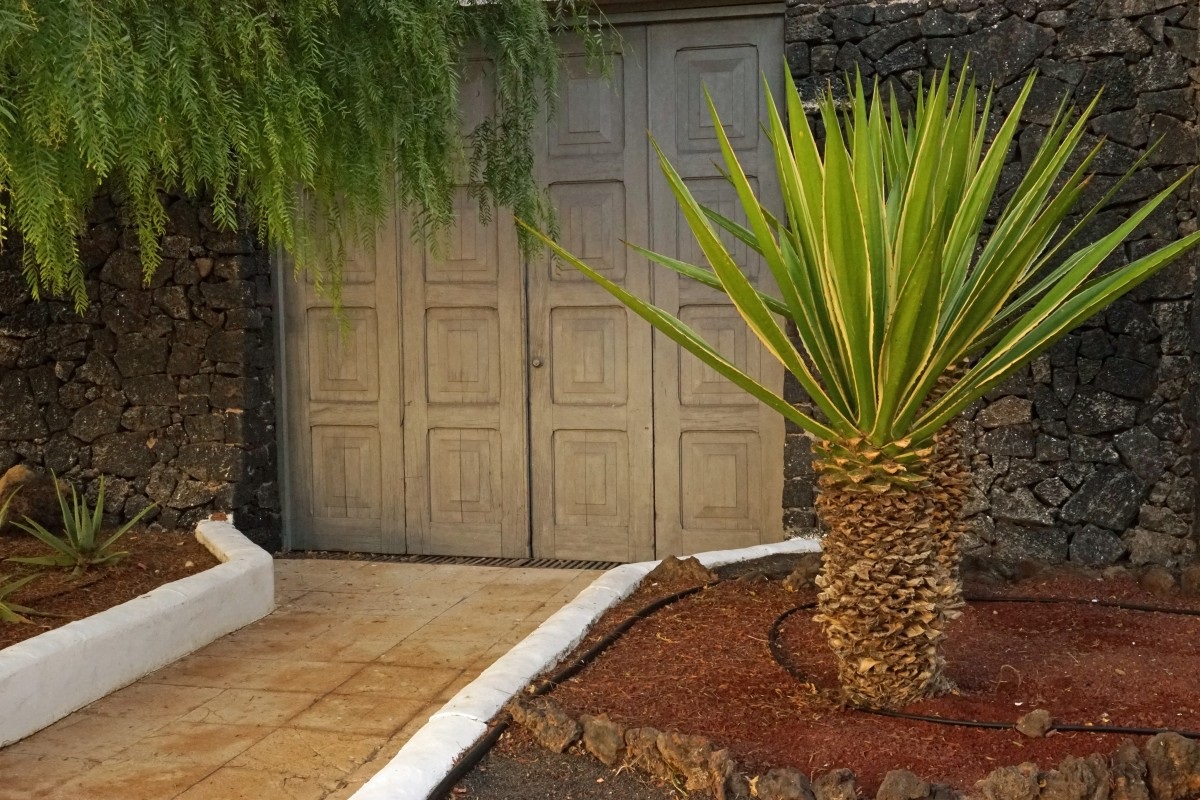
Outside the tropics, there’s no more perfect place for palm trees than Phoenix. It’s in the Valley of the Sun, after all, and palm trees love sun.
Because palm trees grow so well in Phoenix’s climate, they’re all over the city. Simply planting a palm in your yard isn’t enough to make your home stand out. That’s why we’ve collected these five creative ideas on how to landscape with palm trees in Phoenix.
Choosing Palm Trees for Your Phoenix Landscape
Before you figure out what you want to do with your palm trees, you’ve got to select the right species. Luckily, you’ve got a lot of options, since Phoenix falls under USDA Hardiness Zones 9b and 10a. That means the lowest temperatures in winter are about 25-35 degrees, which many palms can survive.
Phoenix’s arid climate poses more of a challenge, though. Most species of palm trees are fairly drought-tolerant, but you still have to be careful. Varieties that do best in humid, tropical climates like South Florida will be difficult to maintain in the desert.
Even so, with more than 2,500 species of palms in the world, you’re sure to find at least one you like that can thrive in Phoenix. Once you find the palm for you, here are some suggestions on how to incorporate it into your landscape design.
1. Wow your neighbors with a rainbow of colorful palms

Just like the majestic purple king palm pictured above, palm trees come in a lot more shades than your garden variety green. Some have vibrant leaves in different colors, some bloom with bright flowers in the summer, and some have trunks or stalks with interesting pigments.
Colorful palms are a great way to make your landscape stand out. They’re more exotic and visually striking than the standard palm trees you see in Phoenix.
You can make your landscape even more unique by mixing palms of different colors. Amidst your trees’ green fronds, you’ll have pops of yellows, oranges, blues, purples, and reds.
Types of palms that would work well for this look:
- Purple king palm (Archontophoenix purpurea)
- Mexican blue fan palm (Brahea armata)
- Flame thrower palm (Chambeyronia macrocarpa)
- Chinese windmill palm (Trachycarpus fortunei)
2. Create a shady oasis of palm trees

The scorching desert heat can make Phoenix unlivable in the summer. You might want to go outside and relax in the fresh air, but that’s hard to do with the sun beating down on you relentlessly.
Luckily, many palms make great shade trees. You can use them to create a sheltered corner of your yard where you can take refuge from the heat.
If you want shade for your swimming pool or outdoor living space, palms are the perfect choice. Their non-invasive roots won’t damage pavement or underground plumbing. They’re also relatively clean trees, so you won’t have to clean up after them all the time.
Types of palms that would work well for this look:
- Queen palm (Syagrus romanzoffiana)
- California fan palm (Washingtonia filifera)
- Canary Island date palm (Phoenix canariensis)
- Senegal date palm (Phoenix reclinata)
3. Contrast textures with succulents and palm trees

Succulents are the most drought-tolerant plants out there, making them a staple of desert landscaping. Most succulents, like most palm trees, thrive in full sun. That’s what makes succulents and palms a great pair for planting.
This pairing isn’t all about similar needs, though. It also makes your garden more interesting to look at, with feathery palm leaves breaking up the hard structure of most succulents.
You’ll want to choose especially drought-tolerant species of palms for this landscape design to ensure that all the plants have similar watering schedules. As an added bonus, your drought-tolerant garden will be water-wise and easy to take care of.
Types of palms that would work well for this look:
- Caranday palm (Copernicia alba)
- Guadalupe palm (Brahea edulis)
- Mexican palmetto (Sabal mexicana)
- Chilean wine palm (Jubaea chilensis)
4. Upgrade a garden with a small palm tree centerpiece

With a small palm tree as its focal point, your garden or plant bed will stand out with a tropical look. Palms make a perfect centerpiece because of their long fronds cascading out from the center in every direction.
For this look, you want a small palm or a very slow grower, which will take several years to outgrow your garden.
Since most palm trees of this size are plain green, you’ll need to use the surrounding plants to give your garden some color. Many native Phoenix plants could complement your palm tree well, including the desert fairy duster, the tufted evening primrose, or the desert plumbago.
Types of palms that would work well for this look:
- Pygmy date palm (Phoenix roebelenii)
- Areca palm (Dypsis lutescens)
- Chestnut dioon (Dioon edule) (technically a cycad, not a true palm)
- European fan palm aka Mediterranean fan palm (Chamaerops humilis)
5. Frame an entryway with tall palm trees on either side

Would you like your front door or the entrance to your driveway to be a little more glamorous? Palm trees might be the answer. Planting one tall palm tree on either side of an entryway creates a natural arch of palm leaves to welcome your guests.
With this dramatic landscape design, your home will have a relaxing, tropical feel the second someone steps inside.
Types of palms that would work well for this look:
- Sabal palm (Sabal palmetto)
- Foxtail palm (Wodyetia bifurcata)
- Sylvester palm (Phoenix sylvestris)
- Pindo palm (Butia capitata)
FAQ about landscaping with palm trees in Phoenix
How much do palm trees cost in Arizona?
The price of your palm tree will depend on its species and its height at the time you buy it. Mature palms that stand at 10-20 feet cost thousands of dollars, and prices vary greatly from species to species.
Smaller palms, such as the foxtail or areca, typically run between $100 and $200. If you buy a young fledgling palm, you could pay as little as $25, but keep in mind you may have to wait several years for the palm to reach the height you want for your landscape.
How do you take care of palm trees in Arizona?
To care for your palm tree, you’ll need to make sure it gets the proper fertilizer and amount of water.
You’ll want to use a specialty palm fertilizer, which contains specific nutrients that can keep your palm strong. Watering your palm regularly, especially for the first two years after you plant it, will be vital in Phoenix’s dry climate.
When to Hire a Landscaping Professional
If you’ve never planted a tree before, you may want a professional Phoenix landscaper to plant your palms for you. As you’ve already seen, palm trees aren’t cheap. They’re an investment. You don’t want your investment to die after a few months because you didn’t plant it correctly.
Professional landscapers can also help you develop a proper care routine suited to the species of palm you decide to plant.
With palm trees in your landscape, your home can become the tropical oasis every desert traveler dreams of. And with these creative suggestions, your palms can stand out from all the others in Phoenix.
Main Image Credit: Pxhere





